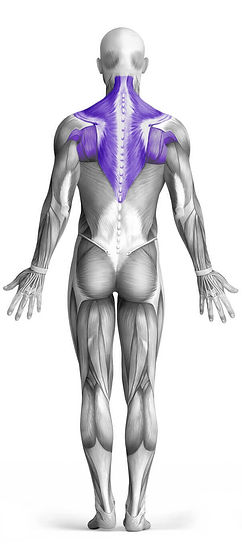Bodyweight Standing Close-Grip One Arm Row 101 Video Tutorial
0

Exercise Synopsis
Target Muscle Group
Upper Back
Secondary Targets
Execution
Compound
Force Type
Pull
Required Equipment
Bodyweight
Fitness Level
Intermediate
Variations
None
Alternatives
Timer
Hour
Minute
Second
Stopwatch
00:00:00:00
Overview
The Bodyweight Standing Close-Grip One Arm Row is an effective upper body exercise that primarily targets the upper back, including the lats, traps, and rhomboids, while also engaging the biceps as secondary muscles. This bodyweight exercise is performed by pulling your body upward using one arm while maintaining a close grip on the anchor point, typically a bar or suspension trainer. It requires no additional equipment beyond your bodyweight, making it a convenient exercise for home workouts or anywhere without access to weights. This movement strengthens the back and improves posture while also challenging the biceps and forearms for added upper body development.
How to Perform
Stand at a slight angle, leaning back just enough to engage your upper body, and extend one arm fully to grip the object (such as a bar or suspension trainer).
Using your arm strength, pull your body toward the anchor point, keeping your elbow close to your side to focus the effort on your upper back muscles.
At the peak of the movement, pause briefly to fully activate your back and biceps.
Gradually lower your body back to the starting position, maintaining a straight posture throughout the movement.
Repeat the exercise with the opposite arm, ensuring proper form and control on each side.
★ Bonus: For exercises that involve external weights (such as dumbbells, barbells, or machines), the One Rep Max (1RM) calculator can help you estimate your maximum lifting capacity. Use it to track your strength progress and adjust your training for optimal results.
Tips
Grip Properly: Securely grasp the handle with your palm facing inward, ensuring a firm hold. This grip encourages better activation of your biceps and upper back muscles. Avoid a loose grip or positioning your palm facing downward, as this can strain your wrist and reduce effectiveness.
Maintain Control: As you pull yourself toward the anchor, focus on drawing your elbow back while squeezing your shoulder blades together. Keep your arm close to your torso throughout the movement. Resist the urge to use momentum to snap your body backward, as this can cause unnecessary strain on your back and won’t target the muscles as efficiently.
How Not to Perform
Avoid Using Momentum: Do not jerk or swing your body to pull yourself toward the anchor. This wastes energy and reduces the effectiveness of the exercise. Focus on slow, controlled movements to fully engage your back and biceps.
Don’t Overextend Your Arm: While starting the exercise, avoid letting your arm extend too far forward. This can put unnecessary strain on your shoulder joint and reduce the focus on your back muscles. Keep your arm extended but within a comfortable range.
Don’t Flare Your Elbow Out: Keep your elbow close to your body as you pull yourself upward. Flared elbows can lead to shoulder strain and shift focus away from the upper back, decreasing the exercise’s effectiveness.
Avoid Arching Your Back: Do not arch your lower back excessively while pulling your body upward. This can cause lower back strain and shift the tension away from the upper back. Maintain a neutral spine throughout the movement.
Don’t Use a Loose Grip: Ensure your grip is firm on the handle. A weak grip can decrease muscle activation in the arms and back, and may cause wrist discomfort or injury. A strong, controlled grip will help engage your biceps and back muscles properly.
Avoid Rushing the Movement: Perform the exercise in a controlled and deliberate manner, both on the pull and the release. Rushing through the movement can lead to improper form, ineffective muscle activation, and a higher risk of injury.
Don’t Let Your Core Sag: Keep your core tight and engaged throughout the exercise to prevent your body from sagging. A weak core can compromise your posture and lead to unnecessary strain on your lower back.
Avoid Overtraining One Side: Ensure you alternate arms and focus on even effort with both sides of your body. Overworking one arm while neglecting the other can lead to muscular imbalances and potential injury.
Variations
Variations of fitness exercises refer to different ways of performing a specific exercise or movement to target various muscle groups, intensities, or goals. These variations aim to challenge the body differently, prevent plateaus, and cater to individuals with varying fitness levels.
Alternatives
Alternative exercises in fitness refer to different movements or activities that target similar muscle groups or serve the same training purpose as the primary exercise. These alternative exercises can be used as substitutes when the original exercise is unavailable or challenging to perform due to various reasons such as equipment limitations, injuries, or personal preferences.








